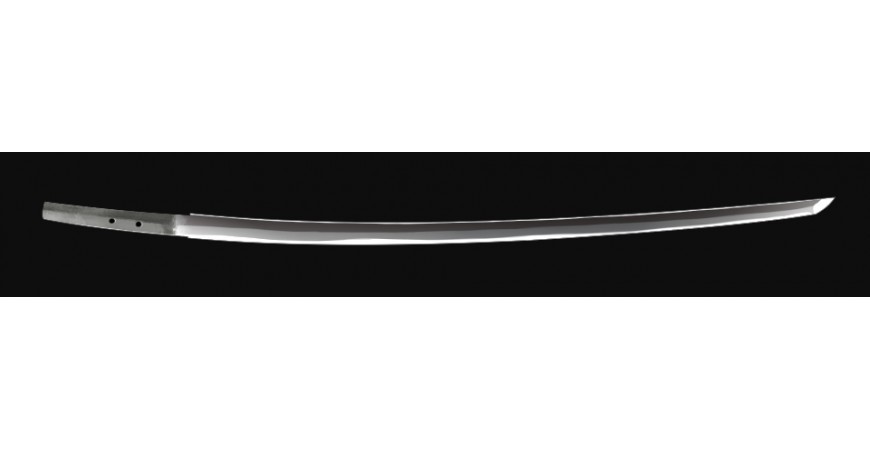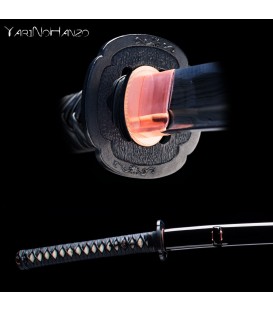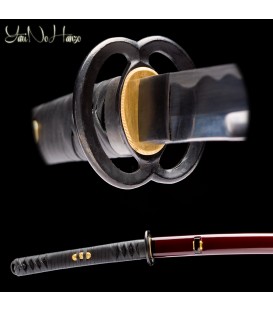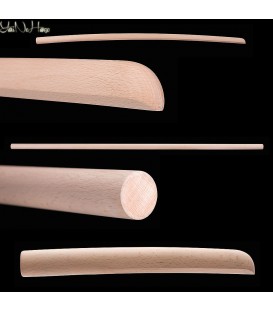
Kogitsunemaru: The Legendary Tachi Forged with a Fox Spirit
Kogitsunemaru: The Legendary Sword Forged with a Fox Spirit
Among Japan’s many famous swords (meitō), few carry a legend as mystical and captivating as that of Kogitsunemaru—the "Little Fox Blade." Said to have been forged not by a single human hand, but with the assistance of a divine fox spirit, this sword occupies a unique place in Japanese folklore, literature, and traditional performance.
But who was the swordsmith behind this miraculous creation, and what does the story tell us about the spiritual relationship between man, steel, and kami?
Munechika, the Swordsmith of Heian-kyō
The man behind Kogitsunemaru was Sanjō Munechika, a legendary swordsmith of the Heian period (794–1185). While his exact birth and death dates remain uncertain, he is believed to have lived during the reign of Emperor Ichijō (986–1011). Munechika resided in Sanjō, a district in what is now southern Kyoto Prefecture, the ancient capital of Japan.
Due to his location and craft, he is often referred to as Sanjō Munechika or by the nickname Kokaji.
Although few of his works have survived to this day, Munechika’s name is etched into the cultural memory of Japan thanks to stories, traditional theatre, and religious rites. One such story is immortalized in the Noh play “Kokaji”, which recounts the divine forging of Kogitsunemaru.
The Imperial Command and a Mysterious Visitor
According to legend, Emperor Ichijō received a strange revelation in a dream: he was instructed to commission a sacred sword from Munechika of Sanjō. The emperor sent a court official named Tachibana no Michinari to deliver this imperial edict (chokumei).
Munechika, deeply honored yet troubled, accepted the command. However, forging a tachi of such quality was not a task he could complete alone—he needed an aizuchi, a second smith to strike the metal in rhythm with his own blows. And none could be found.
In desperation, Munechika prayed at the local shrine of Inari Myōjin, the deity of rice, prosperity, and—importantly for this story—blacksmiths.
While at the shrine, he was approached by a mysterious childlike figure, who addressed him by name and spoke of the emperor’s command—news that had not yet left Munechika’s home. Astonished, Munechika asked who he was. The child replied cryptically, “Heaven’s voice echoes on Earth. Walls have ears, and stones have mouths.”
The boy went on to tell Munechika not to worry: the age was prosperous, and the sword would surely be completed. He recited ancient tales of Chinese emperors, mythical blades, and even spoke of Kusanagi no Tsurugi, the sacred sword of Yamato Takeru. Then he vanished.
The Fox of Inari and the Blade’s Creation
Back at his workshop, Munechika prepared the sacred forging platform. As he began, a fox spirit—messenger of Inari—appeared and offered to serve as his aizuchi. Together, human and spirit hammered the steel in divine harmony.
The blade was completed with both sides bearing inscriptions: one reading “Kokaji Munechika”, and the other simply “Kogitsune”—Little Fox.
When the tachi was presented to Tachibana no Michinari, the fox bowed and vanished into the clouds.
This tale not only elevated Munechika’s status as a master swordsmith, but also solidified the fox as a symbol of divine guidance and craftsmanship in Japanese culture. It’s said that Inari shrines became centers of worship for blacksmiths thanks in part to this legend.
Kogitsunemaru is part of a private collection, and there are no photographs of this tachi.
The Shrine and the Flame Festival
One such place is Kazaninari Shrine in Kyoto’s Yamashina Ward, where Munechika is believed to have prayed. There, the Hitaki Shinji (Fire Ritual), originally a blacksmith rite, is held every November.

The ritual of Hitaki Shinji - photo: author's personal archive
The myth of Kogitsunemaru lives on not only in shrines and sword collections, but also in stage plays, anime, games (such as Touken Ranbu), and martial arts traditions that emphasize the spiritual bond between the swordsmith, the blade, and the divine.





